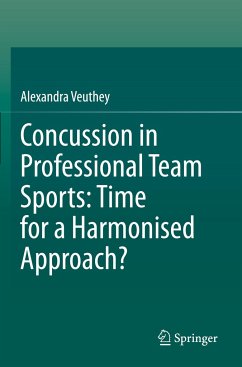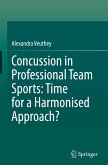The risk of athletes sustaining concussion while participating in professional team sports raises two serious concerns both nationally and internationally.
First, concussion in sport carries a public health risk, given that injured athletes may have to deal with significant long-term medical complications, with some of the worst cases resulting in Chronic Traumatic Encephalopathy (CTE).
Secondly, sports governing bodies are now exposed to the risk of financial and reputational damage as a consequence of legal proceedings being filed against them. A good example of this, among many other recent examples, is the case of the United States of America's National Football League (NFL), the governing body for American football, which, in 2015, committed to pay US$ 1 billion to settle the class action filed by its former professional players.
This book examines how to most efficiently reduce these public health and legal risks, and proposes a harmonised solution across sports and legal systems.
First, concussion in sport carries a public health risk, given that injured athletes may have to deal with significant long-term medical complications, with some of the worst cases resulting in Chronic Traumatic Encephalopathy (CTE).
Secondly, sports governing bodies are now exposed to the risk of financial and reputational damage as a consequence of legal proceedings being filed against them. A good example of this, among many other recent examples, is the case of the United States of America's National Football League (NFL), the governing body for American football, which, in 2015, committed to pay US$ 1 billion to settle the class action filed by its former professional players.
This book examines how to most efficiently reduce these public health and legal risks, and proposes a harmonised solution across sports and legal systems.








